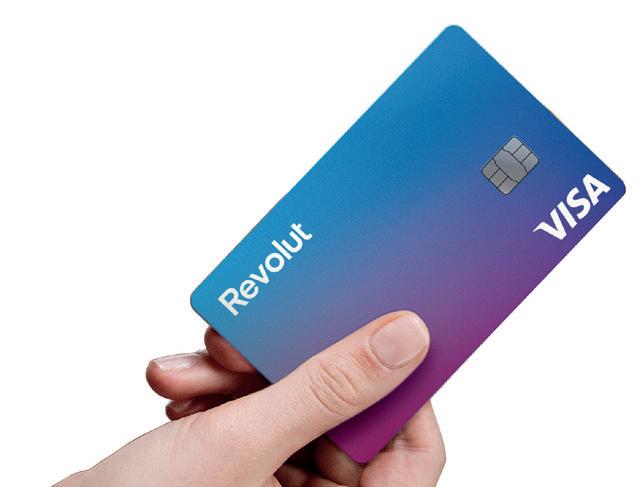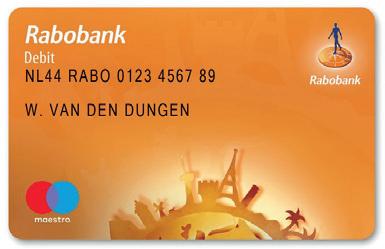Somethıng in












































The theme for this year’s Sibos in Amsterdam is ‘progressive finance for a changing world,’ and it’s a very public opportunity for the industry to demonstrate it understands just what impact those changes are having on individual and business customers.
From climate change to the cost-of-living squeeze, the staggering increase in online fraud – bringing misery to millions – and growing concern over the unchecked transfer of illicit assets, highlighted by the war in the Ukraine, many of the world’s problems are fundamentally linked to the movement of money.
What these pressures have highlighted is that digital can be both the problem and the solution. And it’s incumbent on all in financial services, from the wet-behind-the-ears startup, to the grey beards of banking, to figure out solutions – together.
Many of the established players featured in this special supplement are already partnering with techs across the value chain. It’s not always easy and there are risks - some real, some imagined – as well as huge opportunities for those involved.
But, as Henry Ford was fond of saying: “If everyone is moving forward together, then success takes care of itself.“
Transforming the back office: AI-enabled technology AI-based reconciliations technology can play a transformative role in helping banks process an ever-growing number of transactions – even in complex areas, such as exceptions management, says SmartStream’s CEO Haytham Kaddoura
7 Game on!
There are new players on the financial pitch and SWIFT is being tasked to ensure they all get along. Nick Kerigan, its head of innovation, explains how it might help
10 Moving the dial on financial crime Banks and their fintech partners share responsibility for driving risk out of the system. But how best to go about it? By taking a radical new approach, says David Howes, Global Head of Financial Crime Compliance at Standard Chartered
14 The partnership approach Prasangi Unantenne, Head of Implementation for Wise Platform, addresses the top five misconceptions institutions have about working with fintechs
16 Taking the lead Inter Bank’s e-commerce debut was a bold move, but the bank’s Alexandre Ricio, and Eduardo Goni of payment solutions provider ACI, say it’s time for other legacy institutions to be equally dramatic
Bottomline Technologies’ Eli Shoshani, and Sandeep Lai from DBS Bank look at how best to account for financial taste in the APAC region
22 Building differentiation for banks Banking Circle is powering the payments for more than 250 regulated businesses, financial institutions and marketplaces, enabling them to gain access to the markets in which their customers want to trade, via a super-correspondent banking network. Jussi Lindberg, its Chief Commercial Officer, explains the approach
De-hyping the metaverse Jieke Pan, CTO and VP of Engineering at Mobiquity, considers what banks are doing now and what they should be doing to reap the benefits of a virtual world
See it, touch it, smell it, hear it Cards are so much more than a payment utility – and they’re not going out of fashion any time soon, says Rüdiger Vogt at G+D
Picking up the baton Payments, like music making, are a collaborative endeavour. And somebody’s got to direct it, according to Oliver Rajic, Co-founder and CEO of Alpha Fintech, now part of PPRO


A vast amount of data currently flows around financial institutions. Transaction volumes have ballooned, a trend that SmartStream –which also provides managed reconciliations processing services to financial institutions – has experienced first-hand.
Financial firms are under pressure to manage these growing volumes, yet must do so without increasing the size of their operations teams, thereby adding to overheads. This is only one side of the story. Beyond the power to reconcile big data, and the advantages this brings, there also lies the question of being able to do so in real time, including, critically, the ability to resolve problem areas such as exceptions.
Unfortunately, some firms are struggling to understand and control the large quantities of increasingly complex data which passes through them – particularly those hampered by ageing legacy systems and inefficient manual processes. A lack of control over their data, as well as an inability to gain a full and rapid understanding of the information that flows around them, exposes firms to heightened risk. Even more concerningly, the industry is plagued by operational losses – many of which are entirely avoidable.
To make matters worse, added pressure has been piled on back offices by the explosion in digital payments, driven by the coronavirus pandemic. Responding to the mushrooming demand for instant payments is proving tricky for the traditional back office, and it is clear that an alternative – and far more innovative – approach is needed if financial firms are to meet this challenge.
Skills dependency is another problem area for the financial sector. Important operational knowledge is often lost when staff retire, leave or are promoted, and companies must invest in systems that allow them to create greater resilience against vital corporate intelligence being lost. Freeing up back-office staff from repetitive, low-value processing activities, to carry out higher value tasks such as exceptions management, is another area in which financial institutions need to make further progress.
In order to handle the huge volumes of information now at play, financial institutions require technology – such as Cloud-native solutions – which is capable of processing millions, or even billions, of lines of data per second. They need to harness AI and machine learning (ML) too, if they are to find new ways of increasing efficiency and driving up processing rates without adding extra staff to operations teams or pushing up costs.
AI and machine learning are ideally suited to handling complex data sets. They can detect subtle patterns in huge volumes of data, in a way the human eye never could, facilitating understanding. Their ability to tackle vast quantities of information also means they can inject much-needed speed into back-office processes. They allow banks the opportunity to unlock the true value of their data, turning what is currently a burden into a valuable asset.
SmartStream has created sophisticated, AI-enabled solutions which transform the way firms manage and reconcile data. Our systems combine multi-year operational experience with AI to deliver actionable information. They boost automation,
helping banks to improve service levels, stem operational losses, achieve superior margin management and perform more accurate data analysis. These solutions are already in use, and offer proven cost-efficiency benefits.
Five years ago, SmartStream, which has a long track record of investing in research and development (R&D), founded its own Innovations Lab. The purpose of the Lab, which is based in Vienna and staffed by highly talented data scientists and technologists, is to apply AI and ML to the specific business issues faced by our clients. The Lab collaborates with customers –including several large Tier 1 banks – on proof-of-concept projects, to identify high-value business cases where AI can create proven cost and efficiency benefits.
The Innovations Lab provides a great deal of reassurance to firms about the use of AI. By running proof-of-concept projects in partnership with banks, using our AI technology in combination their data and processes, firms are able to see for themselves the incredibly positive results this technology brings, which does much to allay any lingering fears.
During the course of these projects, we have been able to prove to the Tier 1 institutions we partner with that significant efficiencies can be achieved through the use of AI-enabled technology. Where AI and machine learning is employed in reconciliations processing, we have demonstrated that efficiency can be improved by as much as 20 per cent. This boost provides banks with the capacity to scale in response to growing transaction volumes.
Alongside these collaborations, we have developed a highly advanced,
AI-based reconciliations technology can play a transformative role in helping banks process an ever-growing number of transactions – even in complex areas, such as exceptions management, says SmartStream’s CEO Haytham Kaddoura
yet easy-to-use, AI-based application, called SmartStream AIR. It has a truly transformative impact on reconciliation onboarding and processing, completing tasks that have traditionally taken weeks or months in a matter of seconds.
SmartStream AIR requires no training or configuration, and is easy to get started with. Users simply upload raw data to the application, in any structured format. The application then matches the information using unsupervised AI. Transactions can be streamed in real time, which is useful in areas where speed is essential, for example digital payments. Using SmartStream AIR, firms can reconcile complex data sets rapidly and accurately, driving up processing speeds. In addition, the solution reduces skills dependency, e.g. on configurational skills and maintenance.
SmartStream has also developed an ‘observational learning’ component, called Affinity, it learns from the manual matching behaviours of human users. As well as forming part of SmartStream AIR, it is being embedded across our existing solution suite, including in the technology used by our managed services arm.

A recent project, carried out in collaboration with a Tier 1 bank, to integrate Affinity with the bank’s reconciliations platform, demonstrates the useful role Affinity can play in boosting efficiency levels. The bank has high automation levels and excellent match rates but wanted to tackle a residual pool of manual matching.
intelligence, preventing it from being lost or disrupted as a result of events such as staff absence or holidays. Its ability to learn rapidly from human users also frees up staff to concentrate on higher value tasks, for example, exception management.
SmartStream heavily investment in R&D ensures it maintains a continual focus on innovation. As part of this process, the company has recently developed SmartStream AIR v.7. This application aims to inject greater efficiency and control into exceptions management, through the use of advanced Cloud-native AI technology. It is a first in the industry and an advance the market urgently needs.
Enlightening: SmartStream AIR helps harness data’s power
Affinity was used to deal with this remaining group of complex cases, reducing the final percentage of manual matching and creating potential savings – and for large firms such as this, which handle huge volumes of transactions, shaving off the last few per cent of manual matching can add up to a cost reduction of millions of dollars.
Importantly, by learning from the matching activities of skilled operational staff, Affinity preserves vital corporate
At present, exceptions management is controlled by users or user-defined automation rules. SmartStream AIR v.7, however, does things differently. It streamlines today’s cumbersome and time-consuming exceptions-handling processes by learning directly from an experienced human reconciler’s actions or historic data. When trained, the AI underpinning the application is able to predict fields and workflows for managing exceptions.
SmartStream AIR can provide suggestions to the user or fully automate processes, significantly improving straight-through processing rates. It also frees up reconcilers to focus on other tasks, helping to reduce costs.
SmartStream AIR v.7 massively reduces the time spent managing exceptions that arise from unmatched data, or from data
integrity issues. It automatically classifies the priority of an exception, assigns it to the relevant teams, adds labels (including statuses), and populates exception detail fields, allowing reconcilers to carry out their work more effectively. SmartStream’s intention is to integrate these new AI-based exception management capabilities across its middle- and back-office solutions, enabling clients to experience the advantages this highly advanced technology can bring.
In conclusion, AI and machine learning offer institutions a potentially transformative way forward. In the future, these technologies are likely to play a pivotal role in helping firms process, control and understand data more effectively, assisting them to achieve superior margin, preserve vital corporate intelligence, increase business volumes and improve customer service. Some firms continue to hesitate, but with robust, proven AI and ML-based applications now available, companies should overcome any lingering fears they may have, and take advantage of the benefits these systems can create. Indeed, in today’s rapidly changing and demanding financial landscape, financial institutions can no longer afford to delay – they must embrace these innovations if they are to survive and flourish.
AI and machine learning allow banks to unlock the true value of their data, turning what is currently a burden into a valuable asset

Tomorrow, banking will look different, as flows, business models and places where tomorrow’s goods and services will be exchanged, are changing. We’re here to help support your business today as you move towards tomorrow.

The world is watching: SWIFT is considering the best tactics
There are new players on the financial pitch and SWIFT is being tasked to make sure they all get along. Nick Kerigan, its head of innovation, explains how it might help
In the fragmented world of cross-border payments, SWIFT has been the referee for banks by providing rules for moving money since 1973.
And, according to its head of innovation Nick Kerigan, the cooperative believes it can still keep order on the pitch as the game changes, with innovations such as tokenised assets and digital currencies coming into play.

As with cross-border money flows, the vision with these is to create unified systems – which will stop competing teams effectively taking their ball home and setting up rival leagues.

It helps that bank-owned SWIFT's systems are deeply embedded in its technology stacks. But there’s no doubt the Belgian-based group has moved its innovation activities up a notch over the past five years.
While this year’s major focus is completing the industry migration to SWIFT’s ISO 20022 data standard, and the launch of SWIFT platform Transaction
Manager later in 2022 to give banks straight-through processing of cross-border payments, they are by no means the only game in town.
At the same time, Kerigan is responsible for co-ordinating SWIFT’s response to what it calls the ‘frontier trends’, which it identified in 2022 as digital currencies and the tokenised asset markets.
It’s running a pilot scheme for the latter, alongside financial firms Clearstream, Northern Trust and Citi-backed blockchain provider SETL; and in September, SWIFT also announced a partnership with blockchain-platform fintech Symbiont to improve efficiency for corporate actions data.
We asked Kerigan how SWIFT is approaching these new frontiers and what he believes his team can do to provide the best solutions in the future.
THE FINTECH MAGAZINE: You’ve worked in payments for more than 20 years – what’s your perspective on
how tokens and digital currencies have evolved over that time?
NICK KERIGAN: People use the phrase ‘we went on a journey’ an awful lot, but that’s genuinely true for the digital assets space. Take the emergence of stablecoins, for example; that provided a foundation for the crypto ecosystem, and people have looked to reuse them in different ways.
They started to see the potential benefits of these technologies and for token-based approaches to securities assets. So, we're now witnessing the growth of the tokenised assets market, be they native digital assets or existing securities that are being tokenised.
More recently, we’ve seen the rise of digital currencies, as central banks and other institutions started to recognise that, as the economy becomes truly digital, money needs to become truly digital, too.
There’s no doubt that one of the most exciting things that’s happening in payments right now is this exploration of the digital currency space.

TFM: Some countries already have central bank digital currencies (CBDCs), others are piloting them. Will they be adopted globally?
NK: If we’d had this conversation 24 months ago, CBDCs would have been an interesting topic but we wouldn’t have thought they would happen any time soon.
Now, nine CBDCs are already live, and there are around 14 countries running pilot schemes. That includes China, where a pilot means 100 million people. So it’s happening and there’s a sense within the financial community that CBDCs are inevitable.
SWIFT doesn’t advocate for or against CBDCs, but, seeing this growing momentum, we need to consider how it impacts the financial community. And, in particular, how does it impact the world of payments, and cross-border payments?
At a practical level, if I’m in Europe and have a digital euro, how can I make a payment to someone who’s sat in the UK that doesn’t have a digital pound?

Thinking then about SWIFT’s strategy for instant and frictionless cross-border payments, how do we approach this?
Given that 80-odd central banks are already experimenting with or developing CBDCs, we need to figure out how we ensure those CBDCs don’t become digital islands. How do they connect with the rest of the world? And how do you ensure the journey we’re going on of making payments ever better cross border can be enabled by CBDCs, rather than inhibited by them?
TFM: Can you tell us what SWIFT is doing to prepare for tokenised assets?
NK: The tokenised assets trend is a really fascinating one because the securities industry is asking how it can take existing securities and use the
potential of token technology to achieve some real benefits. For example, we have fractionalisation, whereby a share worth $1,000 can be chopped into 100 tokens of $10 each.
Why would you want to do that? Well, potentially, you can achieve better liquidity. You can also potentially achieve better access to that investment, there will be people who have $10 to trade, but not $1,000. Also, for institutional investors, –you start to look at things such as more sophisticated trading strategies, more diversified risk management and so on.
It’s a relatively small market at the moment but major securities clients have come to us and asked how they can take advantage of it, given that, based on some projections, the market could grow to $24trillion by 2027.
As regards the challenges, most of these tokenised assets are being created on new and specific platforms, so if you’re an existing, scaled securities market player you have to consider which platform you are going to integrate with. What will be the costs? And which platform will be the one where most tokenised assets will sit?
That's why this year we have collaborated with some of our large securities clients, such as Northern Trust and Clearstream, in an experiment to see whether the institutions that interact with SWIFT for securities can also use us to reach those tokenised asset platforms.
Can we tokenise an existing security to make a delivery, versus a payment, transaction on it, and then also de-tokenise it at the end?
What that potentially does is give those securities institutions a way of accessing this new market with the integrations being done by SWIFT on behalf of market participants. That way integrations are done once, with SWIFT, rather than done many times with all the securities participants.
I think that’s an exciting kind of experiment, and we really like doing these forms of
collaborative innovation and working with our clients to figure out new solutions.
Because SWIFT sits across the whole of the financial community, serving some 11,500 banks and corporates, I believe we have a unique perspective, and hopefully we're able to bring together institutions to collaborate on innovation in a fairly unique way.
TFM: More broadly, what’s the role that SWIFT can play in accelerating the adoption of digital assets?
NK: If you look across digital assets and digital currencies, SWIFT can help by doing things once for the financial community. That means those 11,500 banks and corporates don’t have to repeat processes many, many times.
So we will naturally exist in the collaborative innovation space, and we naturally look for challenges that are best solved as an industry, rather than by those individual institutions on their own.
We think, for example, that by connecting with new digital asset platforms we can add real value. This means ensuring interoperability between those platforms, through standards, through API connectivity and so forth.
Similarly, we can add value in the digital currency space by ensuring interoperability between digital currencies.
So we want banks connected to SWIFT to fiercely innovate and produce new services, then we can help them tackle the problems and challenges, and find opportunities that are best solved on an industry-wide basis.
In play: SWIFT is looking to connect all the dots within payments
By connecting with new digital asset platforms, we can add value. This means ensuring interoperability between those platforms, through standards and API connectivity









Banking Circle’s proprietary technology enables Payments businesses and Banks of any scale to seize opportunities, compete and grow. From multi-currency accounts to real-time FX, international payments to local clearing, we’re quick, low-cost, and secure.










Bypass old, bureaucratic and expensive systems and enable global banking services for your clients.


bankingcircle.com








Banks and their fintech partners share responsibility for driving risk out of the system. But how best to go about it? By taking a radical new approach, says David Howes, Global Head, Financial Crime Compliance, Conduct & Compliance Framework at Standard Chartered

Change and risk are two sides of the same progressive coin. It’s why banks for years chose not to deal in it. But engaging in the digital economy is no longer a choice; how banks address some of the challenges it presents them with, is.
For David Howes, global head of financial crime compliance (FCC), conduct and compliance framework at Standard Chartered, ticking increasingly complex regulatory boxes in a purely rules-based system isn’t sufficient – not for the bank, the wider financial services industry, and especially not for those who suffer the very real consequences of a collective failure to stop the flow of dirty money.
It's why Standard Chartered is taking a lead role in shaping a new global, cross-sector approach to anti-money
laundering (AML). And, given the acceleration in the number of fintech partnerships, which present a whole new threat vector for regulated institutions, why Howes is keen it should influence those fintechs’ approach to risk, too.

“We have to comply with laws and regulations - we do not get to choose these. But you’d struggle to find anyone who will argue that the public and private sectors are applying resources to optimum effect and getting the results from FCC that we hoped for,” he says.
While banks are legitimately concerned about being hit with a big stick by national and international authorities, he believes too much of their focus up to now has been on process and not on results.
That countries intercept and recover less than one per cent of global illicit
financial flows, according to the United Nations Office on Drugs and Crime, indicates that AML is broken. Huge investments by banks in technology and people to identify potential suspicious activity in line with anti-money laundering directives and, more recently, stringent international sanctions designed to identify the true beneficial owners of assets, means they diligently generate millions of reports, but that merely demonstrates they’re watching.
Standard Chartered is keen for banks and others to adopt a threat-based approach to compliance, meaning resource could be better deployed in identifying criminals and providing the relevant authorities with the means of pursuing them. Additional vulnerabilities created by an increasing number of players in the financial ecosystem,
not all of whom are required to operate to the same compliance standards as regulated FIs, only makes the argument for such a threatbased approach – one that can be mutualised across the industry – more compelling.
Mox, Standard Chartered’s digital bank, launched in Hong Kong in 2021, has already provided such a model.
Mox started by identifying the unique threats it faced and risk-rating them. The higher and medium-ranked threats were subject to detailed mapping to identify, for example, specific threat corridors, customer segments, geography links and other important attributes. A joint team from Oliver Wyman, Financial Crime News and Mox then worked together to establish the threat relevance and exposure – for example, to the customer base, products and services offered – and the threat impact, such as the financial impact, reputational damage, and customer and investor attrition. The threat classifications went way beyond generic money laundering to rank Mox’s exposure to the specific crimes that it could facilitate, such as people trafficking and drug smuggling.
The bank then applied general, institution-wide controls as well as controls by customer lifecycle – for example, at the intersection of customer onboarding (the stage in the lifecycle) and human trafficking (the identified threat). The findings of the pilot FCC programme were outlined in a joint report, The Threat Lens – Putting The Financial Crime Threat Back Into The AML/ CTF Risk Assessment
Commenting on the pilot, Howes said: “What Mox has done is innovative in that it tried to rethink the risk analysis and say ‘what are the actual threats that we are exposed to and can we move more of our resources towards them?’. It is in line with what the Wolfsberg Group [13 global banks, including Standard Chartered, which are developing industry standards for AML] is saying on making FCC more effective, by focussing on what we can provide – useful information to relevant authorities.
“Being more threat-based in how we think about financial crime risk is absolutely something we at Standard Chartered are seeking to incorporate. We have built risk models for client risk assessment using similar tech to building a credit model, recognising that the data has to be just as clean for financial crime.
“We take variables at onboarding which
give a view on where to risk-rank that client, which directly influences the due diligence we take.
“In transaction monitoring, we are focussed on collecting data on investigations that we have done by thousands of analysts on millions of cases to identify the various indicators that caused them in the end to be suspicious. That leads to you producing cases that are more relevant to authorities.”
Based on the result of the Mox pilot, The Threat Lens report issued the following rallying cry to financial service providers: “While this approach was considered for new and emerging banks, e.g. Mox, the pilot could be considered by other FIs as enhancement opportunities for their existing programmes,” it said.

“The current industry standard for risk assessments is complex and taxing on smaller FIs who may lack the sophistication of systems, management information and workforce to conform to the arduous traditional exercise. A threat-based risk assessment may be a unique and incredibly insightful alternative to the current approach.”

cross-border payments, including missing identity information in the payments chain, making it hard for a FI to understand their exposure to, for example, sanctioned individuals. Indeed, in the UK, the Financial Conduct Authority fired a warning shot across the bows of challengers earlier this year, highlighting inefficient transaction monitoring, lack of due diligence and poor alert management, which would all raise red flags for a banking partner.
“But there are a number of things a fintech can do to be a more credible partner to a bank or to secure banking services,” says Howes.
“Take responsibility for things is the first – if you tell me the regulations under which you operate do not specifically require something relevant to managing risk, that’s not the answer I’d be looking for.
“You can get a culture clash between techs and banks, but remember you are dealing with a regulated party so railing against it is unlikely to be useful to you.
“Be honest, thoughtful and curious about what business risks you might be introducing and change your business model and products if necessary.
“Transparency is important. Any successful relationship is going to be based on trust and if you lose that, you will be debanked very quickly.
Wherever they are in the banks’ value chain – a neo that needs banking as a service or a fintech partner providing specific services to a bank, such as KYC and onboarding – Howes says some of the risks these newcomers present are not materially different to those that exist in the correspondent banking network. Exposure in the latter, of course, has led to widespread de-banking as FIs judged the risk that lower tier organisations presented as being too difficult to monitor. Although in Howes’ view that was a retrograde step, simply serving to make it harder to identify crime and improve compliance, he says: “As such, financial institutions are naturally reluctant to bring the same risk into the business that they have spent all this time refining out of it.”
Weaknesses among fintechs, especially in the startup phase, go beyond a lack of internal compliance expertise to specific weaknesses in aspects of their operation. That’s a particular threat in
“Lastly, pay attention to clean data and technology stacks – capture the right data accurately right from the outset.”
Mutual trust between organisations – big, small, new and established – will be essential when it comes to figuring out the best way forward, as will a united front against financial crime. Banks, in their work with fintechs, regulators and law enforcers, must take much of the responsibility for that, says Howes, if they want to preserve the trust clients have invested in them for so long.
“The compliance mission of the banks in the past has primarily been protecting the bank from regulatory action; that’s important but it should not be the purpose. We should recognise the bigger contribution financial institutions can make to society by leading the fight against financial crime,” he says.
That clearly requires a change of attitude both inside and outside of the organisation. And the dial, he hopes, is moving in that direction.
A threat-based risk assessment may be a unique and incredibly insightful alternative to the current approach
















Better
Prasangi Unantenne, Head of Implementation for Wise Platform, addresses the top five misconceptions institutions have about working with fintechs

Bank/fintech partnerships have come a long way over the last few years, but common misconceptions about how they work and what they can achieve still remain. It’s easy to see why, because – on the

surface – incumbents and fintechs have many differences.
At Wise Platform, we work with more than 50 bank and business partners, many of whom have shared their concerns about how a partnership with
us would work behind the scenes. Here are the five most common concerns, and how we assuage them
1It’s always a better use of resources to build infrastructure internally
When weighing up where to invest in developing new infrastructure internally and where to seek out a partner, key considerations are the time and resource each option will take.
In our experience, banks save significantly when partnering with a fintech, in comparison with developing or building upon a product themselves, and can achieve results more quickly for less. This is because they immediately gain the expertise of fintechs who have spent years developing their product. So there are no lengthy research and development processes – the end product is ready almost immediately, and the integration can take place in a matter of months.
In the case of Wise Platform, our partners gain access to an advanced platform and digital user experience along with the expertise of more than 600 engineers who are focussed solely on international payments. This provides an instant uplift in knowledge for our partner’s company without additional hiring and training, and goes beyond the technical build, to support operations teams, too.
2 Partnering with a fintech might push users away from a traditional bank Some feel that partnering with a fintech is an admission that their service is better.
But fintechs and neobanks are already enticing many users away from traditional banks by offering a range of innovative products, which are often designed to simplify certain features of the traditional banking experience. Seventy-five per cent of consumers globally, according to Statista, have already adopted at least one fintech for money transfer and/or payment services.
By taking advantage of readily available fintech infrastructure, traditional banks actually disincentivise customers from searching for alternative solutions and gain a foothold with future generations of consumers. If you bring new products to your customers that more closely suit their needs, they have no reason to search further afield.
In fact, far from losing customers, you might attract them from other banks that aren’t making the most of partnerships.
3 Partnerships introduce complexity that creates a high-risk environment
In fact, the opposite is the case in a successful partnership. But first, fintech and bank must communicate effectively from the get-go on the requirements
– both internal and regulatory – that need to be followed. By leveraging not only
By taking advantage of readily available fintech infrastructure, traditional banks actually disincentivise customers from searching for alternative solutions and gain a foothold with future generations of consumers
the support of its own compliance teams, but also the experience and knowledge of the partner’s compliance, risk, and fraud teams, as well as dedicated delivery and support teams, the bank instantly expands its knowledge and controls to help mitigate risks.

Neither do partnerships have to be complex to be effective. Wise Platform’s plug-and-play solution requires very little integration and goes live in a few weeks, allowing customers to cheaply,
quickly and conveniently send money abroad.
4 Fintechs and banks are too culturally opposed to be able to work together effectively
There’s no doubt that incumbent banks operate differently from fintechs, and these differences are reflected in the culture of each organisation.
For example, at Wise, we have an in-built structure of radical autonomy, which means each team and individual Wiser is given a huge amount of independence and ownership over their work. This allows us to get stuff done quickly. Sometimes this method of working can be quite different to how our partners operate.
That said, we’ve found partnerships can create an environment in which both sides work creatively and constructively together, each offering fresh perspectives that help drive innovation forward more quickly. This is exactly the environment required to produce exciting new products and services that make life easier for a bank’s customers.
5 Partnerships should only be sought for products and services that the bank doesn’t already provide While this is an understandable point of view, it may mean opportunities to improve vital existing services are overlooked.
This has the same effect as not having the service at all – customers may see a better option elsewhere and switch providers.
Banks may be reluctant to change course if they have already invested heavily in a product internally. This is the sunk cost fallacy – the idea that abandoning the current trajectory is not an option, even if it would be beneficial.
A partner can build on what a bank has and improve it in a fraction of the time and at a fraction of the cost.
Wise Platform has built a global payments infrastructure to revolutionise how money moves around the world. We save partners years of development costs and growing pains, allowing them to innovate quickly and serve, retain and grow their customer base. We work closely with our partners to understand their needs and create a best-in-class cross-border payment experience.
Brazil has long been regarded as the theatre in which the future of financial services – who the actors are and what roles they take on – plays out.

The backdrop for this drama is one of – if not the most – dynamic technology ecosystems in the world, featuring an advanced degree of integration and interoperability between the country’s diverse payment options.
These include Boletos (printed or virtual vouchers, featuring barcodes that can be redeemed via ATMs, bank branches and internet banking), cards, Pix (account-to-account instant payments that can be made via the apps of virtually every payment service provider in the country), and PAGA (the mobile payment company enabling people to send and receive money digitally). Shaping events on this financial stage, is Brazil’s enabling regulatory system.
For years, the star parts have gone to fresh-faced fintechs spinning up instantaneous, app-based payments, easy-to-use credit solutions and more.
Meanwhile, there has been endless speculation on legacy banks’ future – will
they become ‘stunt doubles’, taking on the risk and anonymously servicing payments of far more exciting consumer brands; will they become supporting players as younger rivals steal the limelight in the fight for customer relevance?
Now, one veteran player has introduced an interesting plot twist: Inter Shop is the online consumer retail marketplace launched by Brazil’s Inter Bank in early 2020. The shopping platform, also accessible to US customers, saw sales of more than BRL 3.5billion (US $665million) during 2021 by offering products from more than 100 partner stores, including Amazon. Its Q4 2021 operational review suggests the concept has become a crowd-pleaser, registering 201 per cent year-on-year growth.
Alexandre Ricio, Inter Bank’s vice president of operations, IT and finance, says building an e-commerce platform fell well outside the bank’s comfort zone when it began the project in 2019. But it had identified a clear opportunity – and a business case.


“We had payments, we had a banking app with very high client and transaction flow. But we didn’t have e-commerce,” he
says. “We also recognised there was a risk imbalance between acquirers, banks and merchants. Banks would take a small portion of the proceeds from each purchase via the exchange tariff. The acquirer would take their share, with very low risk, and the retailer was losing out on bounced payments and acquirer fees.
“We realised there was an opportunity for Inter Bank to act as acquirer for our own distribution channel, for which we manage all the payments rather than only generating exchange fees on transactions, and that way we achieve more revenue.”
Such a vertically integrated model could have a big impact on value chains in Brazil. And not before time, says Ricio.
“Acquirers need to think differently from the last 15 or 20 years, which have been based on a little machine with a card for transactions. Eventually, that machine, or even the shopkeeper’s phone itself, will not only be able to absorb credit and debit cards, but Pix and other forms of direct payment, too.
“Banks with a bigger client flow will be integrated directly with acquirers and different payment facilitators will be able to bring solutions that will turn acquirers
The stage is set: And Brazil’s Inter Bank is stealing the limelight
into managers for the payment flow coming from those diverse arrangements. And there is additional value to be achieved from providing solutions to retailers searching for integrated solutions.
“Previous attempts to bring such solutions to market stopped due to integration issues, and a reticence among retailers that were used to traditional
We will see a lot more omnichannel offerings, where, for example, consumers can checkout seamlessly using their phones, even when at a physical store
Alexandre Ricio, Inter Bank solutions, like Mastercard and Visa. For them, transferring to a different methodology seemed too difficult. In 2017 we tried a product called Inter Pag, for example, a version of Pix that worked for just our customer base, [for transactions] from Inter to Inter customers.
“But back then we didn’t have 20 million clients, we only had 200,000-to-300,000. As a consequence, it was really difficult and no one would use it. Now, with Pix and other integrated solutions, everything is less complex, with reduced risk, and all players can operate by sharing the same solution.”
Ricio believes Inter Shop helps retailers, too, with improved customer experience driving loyalty and sales.
“Retailers signing up to our marketplace can execute all their sales through our Inter app, which offers the simplest experience possible. And there’s minimal trolley abandonment, because there isn’t a complicated screen for adding a card number and it doesn’t ask users to log in and create a password,” he says.
“If a consumer wants to buy a phone, for example, they just choose a model from the large number of popular retailers within our marketplace. When they go to the payment screen,they are logged in already via their marketplace credentials; they can choose whether they want to pay by credit card, debit card or instalments, then conclude their purchase with one click.
“Our clients also benefit from cashback as a reward for using our e-commerce channel. These are some of the ways in which we believe we’re providing a future model for the industry.”
Inter Bank is understood to have generated around $260million of capital funding to fuel its superapp growth aspirations through the establishment of Inter Shop – with its range of services potentially including travel, food delivery, healthcare and entertainment.
It demonstrates that, while non-banking entities like Brazilian retailers


Mercadolibre Inc, Magazine Luiza SA and Via Varejo SA have moved into financial services, offering branded credit cards, loans and cheque accounts, becoming quasi banks, the real banks can equally well diversify into the retail space.
Inter Shop is part of Brazil’s endlessly surprising story of innovation in financial services. And, according to Eduardo Goni, payment solutions provider ACI’s country lead, other acquiring banks should take their cue from it.

“They need to change," he says. “Not least because payments are evolving to a point where cards will be less present. A report by electronic payments industry association ABECS, at the beginning of this year, showed that e-commerce and payment links without a credit card being present grew by around 35 per cent, whereas the industry is still basing its assumptions on historic trends of closer to 22 per cent. This represents a green field for acquirer banks to explore, which they are not taking as seriously as they could – for example, embedding cards within bank apps or issuing them virtually in the same way as fintechs like Boleto do; creating microservices for users, including options like buy now, pay later [as Inter has done].
“Someone needs to execute transactions among the high number of consumers using pre-paid cards, too – again, there is a role for the acquirer banks to build relationship, using methods like this, with consumers, the majority of whom aren’t banked but receive government funds that they could be keeping inside a virtual wallet.”
Ricio adds: “As an early adopter of digital technology, Brazil is a testbed for a lot of new concepts. A key example of that is the speed at which our population adopted Pix and completely embedded it in our culture.

“Brazilians are particularly inspired by anything that makes life easier, and will adopt it quickly, which is why I think we’re on the right lines with Inter Shop, and why so many companies, like us, are willing to invest in developing new technologies in our country.”
Brazil’s unique innovation status was outlined to the World Bank’s annual forum meeting in May by David Vélez, founder and CEO of Nubank, who suggested that the country is adopting digital payments faster than anywhere else on the planet. Vélez said burgeoning payments innovation is helping to boost financial inclusion and providing access to bank accounts for the first time to millions of Brazilians: 16 million people have been ‘enfranchised into the Brazilian financial system’ since the COVID-19 pandemic, meaning that ’85 per cent of Brazilians now have access to financial services [which] represents one of the highest increases in the banked population in decades’, he told the World Bank.
His report cites other initiatives that are helping to resolve the country’s remaining barriers to financial inclusion,
including one by his own bank, which was founded in São Paulo in 2013. It has grown to provide one of the largest digital banking platforms in the world, offering financial products to more than 53 million customers with recent data suggesting Nubank has opened access to the financial system for 5.6 million people who had previously been excluded.
Such impressive progress has been fostered in Brazil by the open-minded approach to innovation taken by the Brazilian Central Bank, which is helping to remove barriers such as onerous licensing procedures and high capital requirements, according to Vélez.
ACI’s Adriano Goni believes the Central Bank’s approach has paid off, not just in terms of unshackling fintechs and incumbents to innovate, but for the country’s economy, too. He points to year-on-year growth in gross domestic product of 22 per cent in 2022, which he says is 50 per cent ahead of comparable nations. In terms of what this ‘can-do’

The evolution of digital BNPL solutions here was practically inevitable and our unique experience with the instalment payments concept will support innovation Eduardo Goni, ACI environment means for the future of banking in Brazil, Ricio says: “We will see a lot more omnichannel offerings, where, for example, consumers can checkout seamlessly using their phones, even when at a physical store. And an increase in the kinds of invisible payments everyone is used to now with ApplePay, extending to the likes of Pix. There are a lot of things, like this, that can simplify the customer experience and reduce the distance between the thing a person wants to buy and executing that purchase, which will represent a gain for all the players involved.”
One of the specific offerings that has helped to boost inclusion in Brazil, by supporting under-banked and cardless customers, is buy now, pay later. Although, in its digital form, BNPL is relatively
new to Brazil, the concept isn’t. Brazilians have been paying through the use of multiple forward-dated cheques for years, since 34 million people here don’t have access to credit cards. New BNPL solutions also offer credit lines that are independent of belonging to traditional financial institutions, allowing them to pay through services like Boleto or Pix, which offer full interoperability with banks and fintechs. Guaranteed Pix, or Pix Credit, due to launch later this year, will also offer bank and fintech customers credit for instant payments. It should result in lower merchant transaction costs and improved access to high-ticket-price items and lower interest rates for consumers. With its popularity increasing, BNPL represents another income diversification opportunity for incumbents, says Ricio.
“Payment solutions must be totally integrated, with merchants able to offer different price points for different payment modalities, based on the inherent risk within each, be it a bank or other player that ultimately funds that sale,” he adds.
“Cash will disappear and, by creating that multi-product, multi-way payments gate, we will make it much easier for consumers to buy, with credit built in at the back end.”
Goni says: “The evolution of digital BNPL solutions here was practically inevitable and our unique experience with instalment payments concept will support innovation. Our ACI Pay offering supports providers all over the world, as well as in Brazil, with a range of solutions including BNPL, which are highly secure.”
So where does he think Brazil’s payments story will go next?
“There is a very large space to be explored,” Goni says. “Brazil is highly developed in terms of mobile phone penetration, with almost two per citizen. So, acquirers like ourselves need to focus on mobile first, with solutions that are transparent for the end-user, where the integrations happen invisibly behind the scenes and offer solutions that acknowledge users’ different buying behaviours. For example, Brazilians are among the biggest users of social media in the world. WhatsApp has more than 160 million members in Brazil; Facebook and Instagram almost 120 million each, and TikTok 80 million. We cannot ignore these as payments mediums, given their communities are almost bigger than the big banks’ databases.”

To be capable of eating well in every country across the Asia-Pacific (APAC) region requires a high degree of adaptability.
From chewing through jet-black fermented century eggs in China, to devouring an actively angry live octopus in Korea, it’s an area of rich culinary traditions that have differentiated countries over centuries of development.
Banking options in the region have followed a similar pattern. Try settling by card at a small food stall in Taiwan or Japan and you may be asked to install the popular local telecom operator’s mobile wallet LINE Pay. Alipay and WeChat Pay are dominant in China, boasting as many as two billion combined users, while digital wallet PayTM is India’s chosen payment method. People in the Philippines and Indonesia have no appetite for cards, with penetration at just two per cent, while in Hong Kong and Japan, they gorge on them.
Accounting for financial taste here is hard and can be expensive, which is why banking-as-a-service (BAAS) offered by larger, regulated and often pan-regional institutions, is seen as a huge area for growth in APAC, especially when it comes to cross-border payment solutions.
Trade among APAC economies last year rose to the highest level in three decades, exceeding that of trade with the rest of the world, according to a 2022 report from the Asian Development Bank. It noted that integration among regional economies has continued to deepen, encouraged by regional trade agreements like the Regional Comprehensive Economic Partnership (RCEP), potentially covering 30 per cent of the world’s GDP, and the Comprehensive and Progressive Agreement for Trans-Pacific Partnership (CPTPP).
Bottomline’s view is that banks need to keep an open mind as to what technology they build and what services they buy in, to remain adaptable in this changing market. Its mission is to make business payments smart, sharp and secure with
a software-as-a-service (SAAS) offering for all aspects of payments and cash management, including fraud and financial crime management, and sanctions screening.
Eli Shoshani heads up the APAC region for Bottomline and says adoption of Cloud-based technology has been key to its and banks’ strategy there. “We see banks moving away from traditional areas of focus to offer Cloud services. This, in turn, is helping us provide more services to them.
“It is precisely because banks are so highly regulated that they need to go through so many processes to build changes. Whereas, Bottomline, as an established and seasoned service provider, can handle the changes that need to be applied across the whole region at pace,” he adds.
Bottomline’s Universal Aggregator IQ solution delivers a single API-enabled SaaS platform for payments, securities and messaging that helps financial institutions achieve lower costs, wider reach, speed-to-market, industry compliance, greater security and improved risk and treasury management.

corporates want to make payments immediately – the industry no longer has the luxury of T+1 in local or cross-border payments. In a region rich with exotic currencies and plagued by trapped liquidity is the opportunity for multi-lateral platforms and intelligent routing to come to the fore – where you choose the best channel for a payment, based on specific requirements, such as speed, cost, location, or FX rates.
“No payment is ever the same and so the flexibility to choose what matters most and then decide the payment rail is key to operational efficiency – a path recommended by the Bank for International Settlements in multiple cross-border best practice guides.”
The Singapore-based bank DBS is a case in point. It has been diversifying its payment channels for a while, most recently by starting to build its own 24/7 multicurrency payment settlement solution on Partior, the first live permissioned, blockchain-based clearing and settlement platform for commercial bank money – in effect providing immediate cross-border payments to its clients, bank books-to-books.
Payments handling has become more complex for banks as the industry diversifies away from existing infrastructure, particularly in APAC. Shoshani points to schemes like Visa B2B Connect, enabling bank-to-bank transactions with tokenised credentials for business buyers and suppliers, as examples of the proliferating number of alternative payment rails it can offer over a single platform, making it easier and cheaper for banks to access.
“Banks and fintech companies are being driven to build a service to accommodate today’s needs,” he says. “Even large

DBS currently holds the World’s Best Bank and World’s Best Digital Bank titles from Euromoney. More than half its services are now hosted in the Cloud, a technology that has become central to achieving its mission of ‘Making Banking Joyful’. In recent years, that has seen it moving more of DBS’ services to its QR code-based payments app PayLah!, a solution that’s becoming available in 45 countries within APAC, thanks to a tie-up with Union Bank and Singapore’s electronic payments provider, Nets.
For Sandeep Lai, head of digital payments at DBS, embracing the Cloud doesn’t just enable DBS’ customers to enjoy a better banking experience, it also allows it to more easily reach out to customers of other financial institutions via BaaS options and, since November 2021, its API marketplace.

“Where we have a really good product that is better than people can build it, we’ve looked at scaling up and commercialising that software,” he says. “Cross-border payments is one area we

Bottomline Technologies’ Eli Shoshani and Sandeep Lai from DBS Bank look at how best to account for financial taste in the APAC region
We aren’t competing with the banks, but supporting and complimenting them to provide a better service Eli Shoshani, Bottomline Technologies
started to look at some years back, creating it internally and then commercialising it.
“But it isn’t all one-way traffic. This nimble approach to infrastructure development can make it easier for banks like DBS to utilise the hard work done by others as part of their own product portfolio, too. Because customers sometimes want something that is not our strength, like accounting software, we have partners that offer our payment services with accounting software to SMEs, for example.”
This means smaller banks interested in leveraging secure, regulated solutions, have an increasing variety to choose from that can run parallel to their own tech stack, without tinkering too much.
For Lai, the industry has the potential to pull towards a common goal, best achieved with a nimble and adaptable approach.
of wraparound services to support their payment systems. “If they don’t want to use our anti-money laundering (AML) or sanctions screening, that’s fine, but it’s available to just turn on,” he says. ”We aren't competing with the banks, but supporting and complimenting them to enable them to provide a better service to their clients.”
Once in a while, something really big comes along that demonstrates the wisdom of adopting such an approach. The ongoing global transition to enriched financial messaging standard ISO 20022 is one such. It’s already been implemented by in-country clearing, real-time gross settlement (RTGS) and low-value, real-time payment systems across APAC, in all the large economies as well as the Philippines, Vietnam, Malaysia and Thailand.
Globally, institutions running on SWIFT must all have transitioned to ISO 20022’s XML-based messaging format by 2025. Importantly for APAC operators, the new format allows for character sets 10 times larger than legacy MT messages – useful for non-Latin languages – so the network can carry much more information per payment.


“The needs of bank customers –including corporate ones – will be diverse. They will be looking for efficient cross-border payments, efficient acquiring, good FX rates, reconciliation, cash management and treasury. Ideally, they don’t want to go to hundreds of providers that make it complex, but one that can deliver them all – not necessarily alone, but by orchestrating services efficiently,” he says. “The technical side of that can’t be understated: APIs should be easy to integrate into. So, the discussion won’t be with the CFO, but with the product engineers. As a bank, we’ll have to morph ourselves, that’s what our customers will be looking for.”
Shoshani agrees that the need for change comes from market drivers, and from a bank’s clients: “They are demanding immediate solutions, and there are a lot of competitors in the market coming up with them – fintechs, Visa B2B and other cross-border providers. Banks need to adopt these types of solutions, otherwise they will be left behind.”
Just as consumers can choose which service to take from a bank and which from a fintech, Bottomline offers banks a choice
“At some stage, without the right message types, you will not be able to communicate,” says Shoshani. “This is where we come in, doing the conversion and enrichment, as a service.

“For customers that need to enrich the data, you have to change the channels and train/educate users. Banks have to change payment and other supporting systems for channel, statement and compliance, to handle the extra information. Some local clearing systems may not be processing many cross-border payments and are not in a hurry to adopt ISO 20022, which adds complexities; how do you handle this until they do?” he says.
Had a solution like Bottomline’s Universal Aggregator IQ been available when DBS started building its payments capability nearly a decade ago, the bank might well have gone down that route, he reveals. “We looked for providers offering that single point of connection,” he says. He thinks fintechs like Bottomline have ‘done a remarkable job’ so far in connecting the pieces, and that’s to the banks’ advantage:
“Given banks have direct access to clearing systems and FX markets, and are gurus on compliance and risk, they should be able to put this together to deliver great payment rails on the banking network.”
Customers’ needs are going to be diverse. They do not want to go to hundreds of providers that make it complex Sandeep Lai, DBS Bank
Banking Circle solutions are powering the payments for more than 250 regulated businesses, financial institutions and marketplaces, enabling them to gain access to the markets in which their customers want to trade, via a super-correspondent banking network. Here, Jussi Lindberg, its Chief Commercial Officer, explains the approach

“For payments businesses and banks that want a slice of the global e-commerce market, fast, fairly priced payments services that can be easily integrated into their own platforms are critical,” says Jussi Lindberg, chief commercial officer for Banking Circle.

Overcoming a myriad of challenges is key to capitalising on this opportunity. At the heart of these is legacy. There’s also competition coming from new entrants and continued regulatory scrutiny.
“Banks hold a really fundamental ‘trust contract’,” says Lindberg. “They are ideally placed to give their customers better, faster, more cost-effective services.
“The institutions that want to respond to new market opportunities and work in new jurisdictions tell us that they want to do that without diverting focus and investment from their core business.
“Banking Circle is helping banks to create their niche in the business banking marketplace. Collaboration delivers solutions underpinned by fit-for-purpose tech, supported by regulatory expertise. Banks that might have thought ‘that’s not for us’ previously, now realise how we can help them ‘be more fintech’ without putting the ‘trust contract’ they all treasure at risk.
“We are a genuine partner that allows financial institutions to take care of their business rather than get distracted by opportunities that sit outside of their core. Banking Circle and our bank clients work well together on things like tech capabilities; keeping up with regulatory burden and exploring regions and jurisdictions where they might not be prevalent, but still want to be able to offer a service.
“Banking Circle is almost like a sandbox to test out new propositions, opportunities, markets and jurisdictions. Our regulatory experience and tech capabilities complement banks’ own. Plus our payment rails for 25 currencies and 24/7 liquidity give financial institutions confidence we can handle significant volumes.
“We’re also giving banks a future view. This is particularly important in the area of regulation, whether it’s understanding what’s coming next or having knowledge about new jurisdictions they want to enter.”
Another area where Banking Circle is helping banks is de-risking. Larger banks that serve the smaller Tier 2 and Tier 3 institutions with correspondent banking Banks that might have thought ‘that’s not for us’ previously, now realise how we can help them ‘be more fintech’ without putting the ‘trust contract’ they all treasure at risk services, have found themselves with little choice but to de-risk entire regions, sectors or individual partners. The knock-on effect is that medium-sized banks have seen their correspondent banking partnerships under threat. Small fish in a big pond, the lack of buying power means they find it harder to create a competitive
proposition they can confidently offer to their customers.
Research that Banking Circle released earlier this year found that more than three-quarters of Tier 2 and Tier 3 banks had seen their number of correspondent banking partners rise over the past decade: 65 per cent said they think they have too many banking relationships.
“We have the conversation about de-risking with almost every bank we talk to,” explains Lindberg. “Banks are spreading their own risk by working with a greater number of correspondent banks. But more relationships mean more internal resources to manage these partnerships. It also means additional costs, which, inevitably, pass on to the end customer as well as undermining profitability.”
For banks wanting a slice of the cross-border payments opportunity, without having to worry about legacy infrastructure or risk holding them back, Banking Circle has built solutions from the ground up. The fact that the provider is working with more than 250 financial institutions across the globe is evidence of how it is delivering solutions that are the right fit for the market.
“A number of banks and non-banking financial institutions (NBFIs) are already benefitting from the investment in innovation, accessing fast, fairly priced payment services that can be easily integrated into their own platform,” concludes Lindberg. “With a clear approach to support global finance – not de-risk – our clients trust us, so that their customers can trust them in return.”
Supportive approach: Banking Circle is helping traditional institutions ‘be more fintech’


Jussi Lindberg joined Banking Circle in 2022 and is on a mission to tackle financial exclusion. Having worked in global payments and e-commerce for more than 20 years, he has extensive experience of the empowering role of effective, fit-for-purpose solutions. He has held roles in some of the industry’s leading businesses, most recently as senior vice president of business development at Adyen, where he helped elevate the company to become one of the world’s leading payment platforms.
Prior to Adyen, he was at PayPal and eBay, working with hundreds of enterprises to drive growth and improve digital performance.
He is now applying his vision and experience to the new role on Banking Circle’s executive board, helping financial institutions capitalise on the universal benefits of a financial ecosystem that operates in a network of collaboration.
Banking Circle is a fully-licensed, next-generation payments bank designed to meet the global banking and payments needs of payments businesses, banks and marketplaces.
Through its API, it delivers fast, low-cost global payments and banking services by connecting to the world’s clearing systems – enabling its clients to move liquidity in real time for all major currencies securely and compliantly.
The bank processes more than six per cent of Europe’s B2C e-commerce payments flows, equating to more than €250billion in 2021 alone.
Payments are made with trust. We help you embed end-to-end confidence.

Think
every
how many
than
are more
it’s easy to think they
and that’s
On June 26, 2000, the first draft of the human genome was released to the world. Seven years later, on June 29, 2007, the iPhone was unveiled. While both events promised to transform our lives, it's probably fair to say that, to date, only the smartphone has delivered on that for most of us.
Thus far, it’s unclear whether the rebranding of Facebook to Meta on June 9, 2021, will be more akin to our experience of genomics or the smartphone. Nonetheless, it prompted many more of us to wonder what the metaverse actually was.
Interest in the technology spiked at the Facebook Connect event in October last year when the company outlined its vision for the metaverse as the natural successor to the mobile internet – a veritable ‘set of interconnected digital spaces that lets you do things you can’t do in the physical world’.
After that announcement, the metaverse market was predicted to reach $800billion by 2024. Is that hype or substance? Is the metaverse just another attempt to rehash the same technologies that failed when launched via the likes of Second Life?
Maybe we ought to start by looking at what the metaverse is (and what it is not). In Navigating The Metaverse, UC Berkeley’s Tommaso di Bartolo provides a good summary. He defines it as ‘the next generation of consumer engagement: an immersive experience with a self-sustaining, community-driven economy at its centre. It’s a new digital reality for consumers, empowering joint value creation: to build empathy with brands by becoming part of the product’.
Given the nascent nature of the technology, there are understandable comparisons with the early days of the internet. For every Jamie Dimon, who stated that the metaverse represents a $1trillion opportunity as JPMorgan Chase became the first major bank to develop a presence in it, there’s a market sceptic. Indeed, for all the talk around consumer engagement, a survey in February 2022 found that around half of Americans didn’t even know what it was.
Nevertheless, Mobiquity’s recent research found that 75 per cent of banks in the United States and more than half (56 per cent) in the UK are actively engaging with metaverse technologies. Perhaps understandably, larger banks are more active than smaller firms, with most believing that the metaverse will help them reach their customers.

JPMorgan was the first in with its Onyx Lounge, which was launched to provide a practical demonstration of the kind of benefits the technology could provide. In its report, Opportunities In The Metaverse, the company sets out its expectations that the metaverse ‘will likely infiltrate every sector in some way in the coming years… As a result, we see companies of all shapes and sizes entering the metaverse in different ways, including household names like Walmart, Nike, Gap, Verizon, Hulu, PWC, Adidas, Atari and others.
Business leaders and boardrooms around the world are now asking themselves, ‘what is my metaverse strategy?’. For Bank of America, it’s to use virtual reality as part of its training, with the aim of providing more than 50,000 employees with a platform to practise a wide range of simulated client interactions.
“Virtual reality (VR) is highly effective at helping teammates build and retain new skills and it is one of many ways we are using technology to support internal mobility and provide best-in-class learning opportunities,” the company says.
French bank BNP Paribas has long been an advocate of VR-based services, and its first foray into the metaverse has come via something it refers to as W.I.R.E.D. (Wearable Immersive Real Estate Dataroom). This is a digital twin that provides an accurate replica of an actual city, which allows the company to look at the way in which cities evolve. For instance, W.I.R.E.D. will allow users to explore various European neighbourhoods, complete with qualified data for each property.
“The transaction business is changing; technology is supporting the transformation, and W.I.R.E.D. is a perfect example. This immersive tool will allow us to better respond to our clients’ questions and needs,” explains Eric Siesse, deputy general manager of BNP Paribas Real Estate Transaction.
Meanwhile, British bank HSBC made its first move into the metaverse via The Sandbox virtual community. The financial services group has bought a plot of virtual real estate in The Sandbox that the company will use to engage with users on the platform. Ultimately, HSBC believes that the metaverse will eventually become the main way of interacting with the company in the Web 3.0 era, with a wide range of new customer experience opportunities opening up as a result.
Jieke Pan, CTO and VP of Engineering at Mobiquity, considers what banks are doing now and what they should be doing to reap the benefits of a virtual world

As research from ETH Zurich illustrates, use cases like these can often be crucial in helping us to understand new technology, but the breadth of applications being tested out by banks suggests no ‘killer app’ has thus far been stumbled upon to help pinpoint areas for the more cautious among us to follow. The reticent will no doubt point to the considerable hype that surrounded Second Life, with advocates urging companies to set up virtual showrooms to engage with consumers in this new and exciting platform, only for it to fail to take hold and provide a poor return on those investments.
The only way metaverse technologies in the banking sector are likely to succeed, is if they become an essential component of the financial services tech stack. We’ve already seen Cloud technology reach that stage and it is now a central part of most financial companies’ IT systems. But it remains uncertain whether the metaverse will even come close to replicating that level of transformation.
This perhaps explains why the initial forays into the technology by the major banks have been at an application level, rather than a systems level. In other words, they have begun their metaverse journey by doing what they already do in a slightly different way, rather than using the technology to fundamentally change how they operate.
Back in 1990, American management consultant Michael Hammer famously wrote in the Harvard Business Review that we won’t get the benefit of computers until we re-engineer the way companies operate to capitalise on the capabilities they offer. Since then, there has been
an understanding that generational technologies tend to start their journey by, to coin Henry Ford, giving us a faster horse, before they eventually provide real value by reimagining what is possible. In their latest book Power And Prediction, Ajay Agrawal, Avi Goldfarb, and Joshua Gans highlight this by outlining the three core ways in which technology can be used.
■ As a point solution, which is when an existing procedure is improved upon. It can be adopted independently and doesn’t require the system within which it’s embedded to be changed
■ As an application solution, which is when a new procedure is created and adopted independently. This also doesn’t require any changes to the system in which it’s embedded
■ As a system solution, which is when existing procedures are improved, or new procedures are created, by changing dependent procedures
It’s perhaps no surprise, therefore, that it is in the smaller fintechs where this is initially playing out, developing a banking system to facilitate the exchange of goods and services from virtual worlds into the
The only way metaverse technologies in the banking sector are likely to succeed, is if they become an essential component of the financial services tech stack
real world and the first bank specifically designed for the metaverse. Startups have no legacy systems to deal with so they can build from scratch something designed specifically with the virtual world in mind.
If we are to truly realise the opportunity that the metaverse presents, then it’s obvious that much more significant implementations of the technology will be required than we have seen to date. There is a clear sense from banks that they believe that the metaverse will provide valuable new ways for them to engage with customers. In our increasingly hybrid world, this could be more important than ever, removing friction in the customer experience by augmenting physical environments.
At Mobiquity, the idea is to look at the issues customers are facing now, and how they can be alleviated effectively and efficiently, whether that’s through using metaverse technology or not. The end game for metaverse technologies should be going beyond the hype – shifting the virtual experience from connecting people to people, to connecting people and places: Web 3.0.
Before banks jump in to implement metaverse technology, they need to ask themselves if there’s a necessity for the technology to solve a specific challenge, to create a positive impact, or improve existing systems.
Brave new world: The metaverse will deliver fresh opportunities for banks to engage with customers

SmartStream’s fully integrated suite of solutions and platform services for middle- and back-office operations are more relevant than ever – proven to deliver uninterrupted services to critical processes in the most testing conditions. Their use has allowed our customers to gain greater control, reduce costs, mitigate risk and accurately comply with regulation.
With AI and machine learning growing in maturity, these technologies are now being embedded in all of our solutions and can be consumed faster than ever either as managed services or in the cloud.
Simply book a meeting to find out why over 70 of the world’s top 100 banks continue to rely on SmartStream.

For banks that nailed their colours to the virtual mast early on, their obsession with one very tactile, 40-year-old payment method seems curious.
Are they acknowledging the immutable human attraction to things we can touch and hold in our hands? Or is it just an excuse for some shameless marketing? We’ve seen fluorescent, glow-in-the-dark, vertical designs, 24-carat gold-plated… business banking provider Anna even offers one that miaows like a cat (or, at least, the app notification does when users pay by contactless).
The physical payment card is clearly still seen very much as a brand ambassador but, more than that, it remains core to a bank’s interaction with its customers, according to Rüdiger Vogt from payments and identity provider G+D.


“We still see the payment card as an important physical connection between the bank or fintech and its clients, and I think this will continue for the foreseeable future,” says Vogt, who is in charge of fintechs, neobanks, and payment processors in the company’s global e-payments division.
Clients looking for the je ne sais quoi that elevates their card above every other on the market will find art nouveau and neo tech blended in G+D’s ‘Card Bodies’ catalogue. There is something highly sensual about the form factors displayed as part of its Convego services design suite, right down to the aroma-emitting cards infused with ‘the scent of a brand’.
“Over recent years, fintechs have differentiated with cards representing their unique offerings, be they comprehensive

packages for exclusive travelling via metal cards, green investment plans or cards manufactured from ocean-recovered plastic,” says Vogt. “And this is where we’re talking about going off limits, beyond anything we could’ve imagined, in terms of card material, packaging, unboxing experience – you name it. There’s still lots of potential in the physical card and we support our customers in creating innovative and exciting designs, like glow-in-the-dark, OLED (organic LED) display, 3D effects and using new materials such as metals, wood and ceramics.
“And let’s not forget alternative form factors: we’ve also ramped up our business enabling passive and active wearables, with fully tokenised, end-to-end solutions where we provide wearables manufacturers with the hardware, software and service back-up to add payment functionality to their devices, the most famous example being SwatchPAY.”
The investments G+D is making in new research and development (R&D) and production facilities just goes to underline its confidence in the durability of cards as a payment choice.
“We’re investing in physical card innovation and production, we’ve expanded our issuing services further globally and we’ve installed a lab for prototyping these new designs and materials, which keeps growing every year,” says Vogt.
As part of that expansion, the company recently also announced the acquisition of card manufacturer Valid USA, to expand its presence in the North American market.
Established 170 years ago, principally to printed bank notes, G+D has evolved to
A card in the hand… is worth a lot to the financial brand
Cards are so much more than a payment utility – and they’re not going out of fashion any time soon, says Rüdiger Vogt at G+D
offer everything from physical card production via numerous card personalisation centres around the world, to digital payment and security solutions. It’s also heavily invested in virtual card payment and security mechanisms around digital wallets, where the card crosses into the touchless, automated environment.
G+D is seeing growing demand for virtual representations of cards, be they bank-branded or from the big tech XPays.
As a crossover payment method, the card is a phygital blend of customer-centric services that ensure consumers feel loved and valued, says Vogt.
“So, we are not ignoring the trends towards, first, contactless payment, then digital payments and – the next stage – invisible or embedded payments. But I believe that a phygital approach to payments and banking will lead to more customer satisfaction and new growth in financial services,” he adds.
“This means focussing on immediacy, ensuring things happen at an exact moment in time; immersion, users becoming part of the experience, and interaction, to activate the physical and emotional part of the process, which is key in this phygital experience.
Be it Revolut supporting LGBTQ+ charities with its rainbow card, banking platform Curve’s entirely numberless card, or the transparent design from German neo N26, our ‘flexible friends’ have been transformed into fashion accessories, status symbols and, most recently, statements of social responsibility.


“The idea is to combine the best of both worlds, and to add value for our customers in banking and payments, looking at critical points in user journeys. Personalisation of services falls into this category. Card issuance is that first crucial moment after you’ve signed up with a new bank or fintech. It should be a really fun, easy experience and that’s what we’re enabling with our customers.”
G+D’s work with fintechs over recent years has had a formative influence on the company’s own business strategy.
Vogt adds: “Five years ago, we saw fintechs as an interesting development in the market, but didn’t really know what to make of them. We were used to large and mid-sized traditional banks and, all of a sudden, along came these guys that said ‘today my strategy is this’, and then, three months later, after a new investment round, had changed it.
“But you learn to understand the different dynamics and stakeholders,
limited edition with charitable support for independent boxing gyms affected by the pandemic, donating £1 for every card ordered, and stumping up £50,000 itself for the campaign.
RABOBANK AND BBVA KIND TO THE PLANET Rabobank and BBVA’s recycled payment cards symbolise their commitment to environmentally-friendly practices. Both use G+D’s Convego® Recycled Cards made from 100 per cent recycled PVC layers and produced using renewable energy.
Rabobank also personalises its initial card mailings, using G+D’s Convego® Relate Print solution

and fintechs’ stronger focus on growth rather than short-term profitability.
“We learned not to underestimate the potential and power of the agile fintech approach of try, fail, improve, try again. Fintechs are an enormous enrichment for the banking sector, and for us as a paytech.”
In fact, its work with paytechs has inspired G+D’s ‘Payment 4.0’ innovation initiative.
“We started Payment 4.0 with the goal of developing a dedicated business relationship with key partners in the fintech market, to identify companies for cooperation and investment and drive payments innovation together,” explains Vogt, “because we realised there is plenty of growth in this segment compared to some of the traditional customers we work with. Over the last two-and-a-half years, we’ve really started to see the success of this learning experience.
“Last year, we grew by more than 100 per cent in the segment, revenue-wise, and we’re targeting 200 per cent growth this year. It is the fastest-growing segment of the financial industry. It’s giving major impetus to ideation and innovation.
“In general, we benefit a lot from each other – combining G+D’s experience and R&D power with the ideas and agile business development of the fintechs.”
to include targeted brand and marketing messages related to each individual customer, using sustainably produced stationery and reducing unnecessary logistics like stock transportation through on-demand printing.
AUMAX TESTING THE METAL Metal cards – are de rigueur these days for fintechs wanting to make premium customers feel extra special. G+D teamed up with French fintech Aumax to enable its metal card as an exclusive option for its most select ‘Aumax pour moi’ customers. A subsidiary of France’s Crédit Mutuel Arkéa, this card is linked to the neo’s premium service package, including fee-free withdrawals worldwide, refund guarantees, higher cashbacks, advantageous insurance benefits and concierge services.

Payments, like music making, are a collaborative endeavour. And somebody’s got to direct it, says Oliver Rajic, Co-founder and CEO of Alpha Fintech, now part of PPRO

‘I’m playing all the right notes… but not necessarily in the right order’ was British comedian Eric Morecambe’s memorable punchline, delivered during a sketch with the late, great conductor and composer André Previn.
It’s a phrase that might resonate with anyone trying to harmonise their payments business. Here, the ‘notes’ are the myriad ways to pay; the straight lines of the ‘stave’, the payment rails on which they are arranged; and the ‘accidentals’ that moderate the notes, all the other products and services that wrap around a transaction process, from FX to fraud prevention.
Orchestrating all these for the benefit of banks, fintechs and payment service providers that would rather not have to conduct all the sections of this orchestra themselves, is what Alpha Fintech was born to do – specifically, in Asia Pacific (APAC) where the clamour of payment alternatives has reached a crescendo.

It’s not hard to see why. Home to 4.5 billion people (60 per cent of the earth’s population), it’s where payment businesses see one of the biggest opportunities to expand in the near-term. None more so than PPRO, the global digital payments infrastructure provider that acquired Alpha Fintech earlier this year. Underscoring APAC’s importance, PPRO added Gojek’s GoPay e-wallet (which has had 190 million downloads since 2020) to its platform in June, taking it one step closer to offering complete coverage in Indonesia, where close to 76 million people are expected to join the consumer class by 2030, according to the World Economic Forum. And in September, it integrated Malaysia’s e-wallets GrabPay, Touch ’n Go and Boost.
Alpha Fintech’s Cloud-based payments platform-as-a-service (PaaS) integrates digital payment products and services, ranging from payment processing and merchant management through to risk management, fraud prevention and data analytics. It’s been music to the ears of New Zealand’s BNZ and Southeast Asia’s super-app Grab, among many others.
Grab, for example, tasked Alpha Fintech with providing its solutions to increase authorisation rates and lower cart abandonment, as well as simplifying merchant onboarding risk and financial risk management. As a major regional player, with different conditions prevailing in different markets, this third-party approach makes commercial sense for Grab, which retains control over, and continues to build, its customer interface.
“Whether I’m a payment organisation, a large merchant or a payment processor, ultimately, the combination and permutations of solutions I need will depend on the customer verticals I’m servicing, and that’s why collaboration is more relevant than ever,” says Alpha Fintech’s co-founder Oliver Rajic.
“And to be able to collaborate, you need two things: to be able to access and integrate solution providers; and to make them work together, which is service orchestration.”
Its Alpha Fintech’s responsibility, as the PaaS, to make sure all the players perform as one. That’s where service orchestration differs substantially from payment
orchestration, where retailers and merchants simply want to be less dependent on a merchant service provider by routing the transaction to multiple providers, thereby increasing authorisation rates and lowering costs.
“The traditional process is that I send out a request for payment to five providers, I pick one, I integrate them and now I’m stuck with them for five years, whether they’re good or bad,” says Rajic. “Given the rate of innovation presently occurring, five years is an unacceptably long time. A year or two from now, you might need something completely different, but what can you do?”
This is where, he believes, service orchestration is going to drive innovation.

“First, by being able to swap solution providers at the click of a button, you can iterate and you can innovate,” says Rajic.
“Don’t have one fraud provider, have five of them and customise between them. If it’s a young, innovative solution, access it and switch it on. If they go bankrupt, are not as good as you hoped or something better comes along, swap them out.”
That way, the client’s technology resources aren’t drained by worrying about the operational layer. It also reduces any friction involved in the process, according to Rajic.
“What the app store did to the consumer space is what service orchestration is going to do to the fintech space,” he says.
“It will eliminate friction, drive innovation and drive a completely new way of designing products and solutions.”
Now, doesn’t that sound sublime?
What the app store did to the consumer space is what service orchestration is going to do to the fintech space
